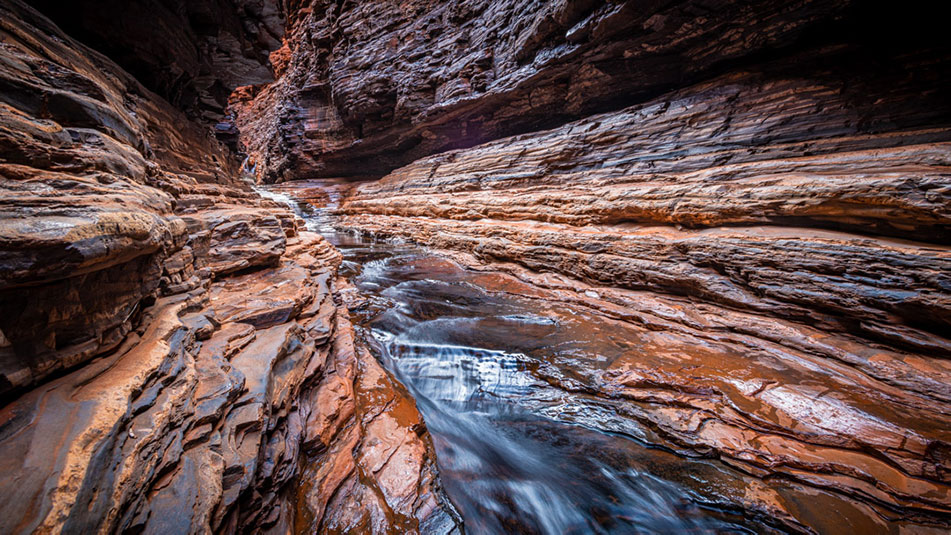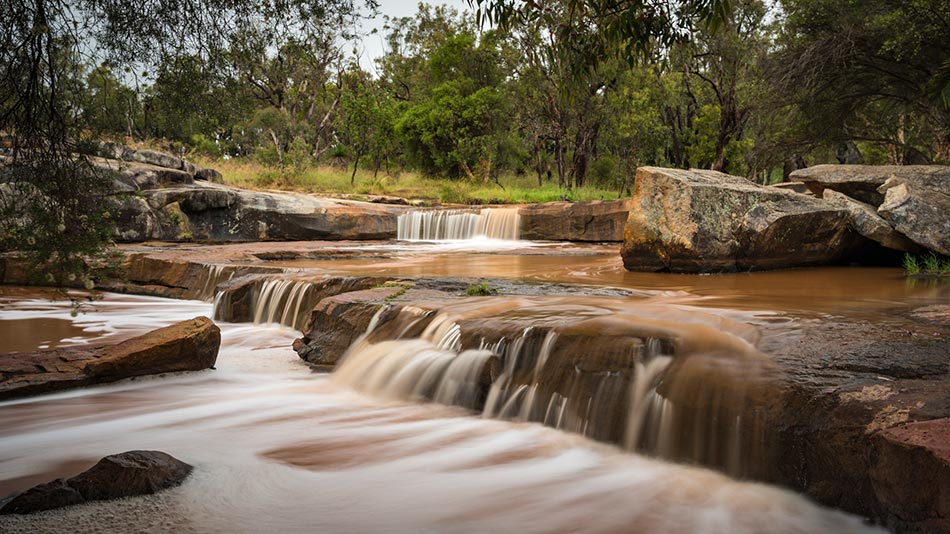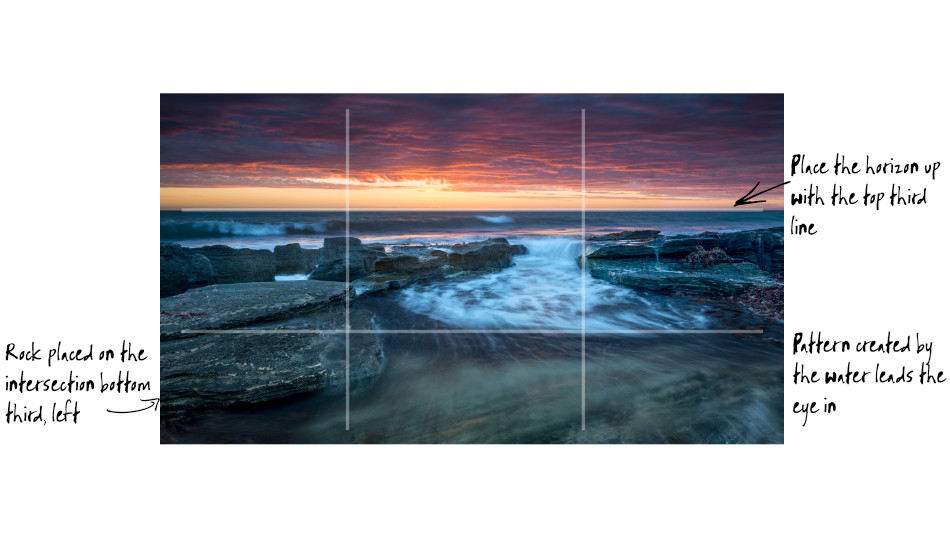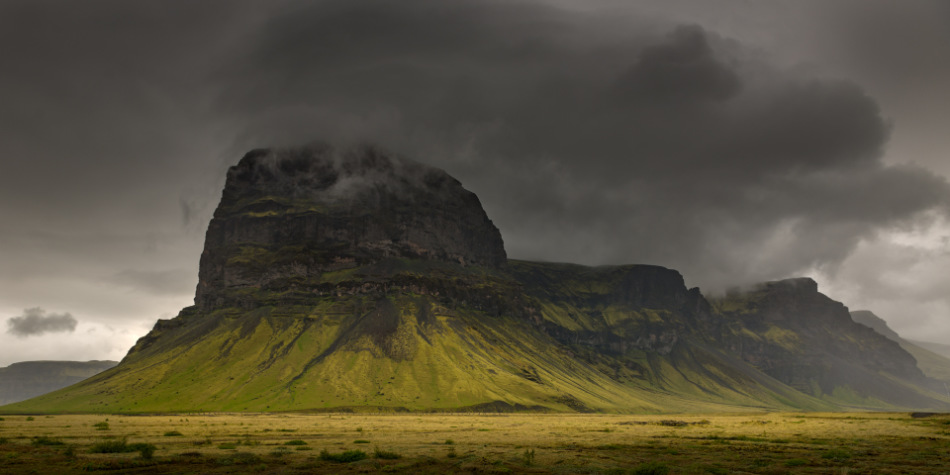In the constant pursuit to improve the landscape photos we take, it’s helpful to know what makes a landscape picture better. One of the biggest influences on a landscape image is our decisions around composition.
So, it’s critical to understand how the composition can improve a landscape picture.
The composition creates a structure for the viewer to follow, making the photo more pleasing to view. Through your composition, you relate elements in the landscape together. An effective composition tells a powerful and emotional narrative, improving the landscape image and making it more compelling and better to view.
What is the composition of a landscape photo?
A landscape composition is the arrangement of elements and interactions in a natural scene. The scene and the subjects included in the photo can be considered the story of the landscape. The composition is how you organize these subjects to create drama, emotion, and structure.
Composition is one of the 5 Core Principles of Landscape Photography that are fundamental to creating beautiful and impactful photos. The others are Location, Light, Capture and Editing.
The composition you choose significantly impacts how the viewer will see and connect with the landscape you’ve captured. Therefore, one of the best ways to improve the landscape pictures you take is to improve your compositions when out on location.
It fundamental to understand how the composition influences the photos. For example, what parts of the landscape image and the story of the landscape does the composition improve?
So here are 4 aspects of a landscape photo you can improve with the composition you create.

1. Define the Story
When I’m exploring a location for a shot, I’m looking around for different landscape features that would look good in a photo. There’ll be various elements or interactions that catch my eye.
Some features are easier to spot, like a tree that stands out from the forest, an epic mountain scene, or a secret waterfall tucked away in the rainforest.
However, it’s not always easy to work out what will make an interesting image. I often search an area, examining it from different angles, until I discover subtle characteristics of the elements that tweak my interest.
For example, it could be a small cluster of trees grouped in such a way that they remind me of a family or bunch of friends or the texture carved into a rock by water over thousands of years.
This main point of interest will form the primary focus of my landscape image. Once discovered, I can use the composition to narrow in on the story and help define it for the viewer.
It can be challenging, in some locations, to work out what to include and not include in the image.
I want to create compositions that help the viewer identify the main subject and include elements that add interest and context to the story.

2. Tell the Story
When you take a shot, the camera captures a 2D representation of the 3D scene, which can feel relatively flat. So you can create a composition that can help bring life and a dramatic feel to the photo.
How do you tell a story in a landscape picture?
The story is the elements you’ve included in the frame. Telling that story comes down to how you’ve composed the scene to move the viewer’s eye through the landscape photo. You can better tell a story by improving the composition of the subject in the landscape picture.
Creating a composition that guides the viewer’s eye around the image can give the photos a more 3-dimensional feel.
By moving the eye to different parts of the image, the viewer gets to experience other aspects of the scene, picking up elements that contribute to the story and enhancing the photo’s feel.
You can use natural leading lines to guide the viewer through the scene, like the ridge of a mountain, the edge of a rock, or patterns created by moving water.
Incorporating an interesting foreground in the frame is a powerful way to introduce the story and intuitively move the viewer into the rest of the scene.
You can extend this technique by adding elements in the midground and background that naturally create layers to draw the viewer through the picture and create an enticing landscape photo.
3. Structure the Story
Some outdoor locations can seem messy. However, your composition can create some order in a natural scene.
Consider how you can arrange the elements to provide some structure for the viewer to follow.
How you lay out the scene in the frame can make it easier for the viewer to understand and help them make sense of what they see.
An excellent strategy to use is to find simplicity in the area, where there are perhaps just one or two features from the landscape you include in your frame.
Patterns occur everywhere in nature. Patterns are an effective way to provide structure to a landscape photo. Look for trees that form a line or some rocks grouped in a triangle.
Shapes are another technique to introduce structure in a picture. For example, three rocks in a seascape can form a triangle and provide a strong feature that can anchor the foreground of an image.
Be aware of elements in the frame that don’t necessarily align with the rest of the image and potentially distract the viewer. Monitor the edges of your picture for objects that the border of the frame cuts off.
Once you’ve set up your composition, assess how balanced the photo feels. A picture that feels heavy on one side or awkward can weaken the image, as it’s less pleasing to view.
You can leverage the Rule of Thirds if there is no prominent structure within the landscape. Creating an imaginary nine-cell grid over your picture, like a noughts and crosses game, provides you with guidelines to align elements within the scene.

You can make a landscape photo more engaging to view by simply placing a subject like a tree on the left or right vertical line or a rock in the foreground on the bottom horizontal line.
The structure you create within a landscape photo, through the arrangement of the elements in the scene, determines how you present the landscape to the viewer, in other words, how you tell the story of the landscape.
4. Enhance the Story
The final aspect of composition is essential for creating a photo that stands out and is compelling to the viewer, enhancing the story.
Like any story, you can elevate a landscape’s story and its impact on the people looking at the photo by including emotion in the image. This strategy helps the viewer become aware of what it might have felt like on location.
Find the mood within the landscape and emphasize it through your composition.
For example, a picture of a single tree standing in a field on a gloomy day might feel lonely. You could compose the shot with plenty of negative space around the tree, emphasizing the isolation you observed, which builds the emotion within the photo.
Many composition techniques we’ve covered above can create a sense of what it was like standing in front of the scene. For example, a strong foreground draws the viewer in and can make the viewer feel more like they are standing on location.
A simple change you can make to your composition is recognizing parts within the scene that portrays the mood you are feeling and dedicating more of the frame to that element.
For example, if the sky is full of dark stormy clouds, change the angle of the camera so you’re incorporating the drama in the sky.

The narrative you discover in the landscape is not limited to the subjects and elements you find but includes the feeling of the place. The viewer will better understand the landscape you captured if you tell that whole story with context. In doing so, you’ll be taking better landscape photos.
What’s next?
If you want to learn more about how to improve your landscape photography;
Check out the 4 guiding principles to what makes a great landscape photo.
Then read the 21 tips for taking a great landscape photo.
